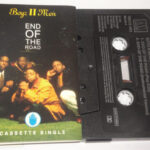On a night in November 1833, North America witnessed an extraordinary meteor shower, an event so breathtaking it became known as “the night of raining fire” or “the night the stars fell.” This spectacular celestial display was so intense that many observers at the time interpreted it as an omen, even a sign of the world’s end. Decades later, this dramatic night sky became the inspiration for a book and, most famously, the evocative song “Stars Fell on Alabama,” giving a poetic name to this historical phenomenon. The phrase “Stars Fell on Alabama” resonated so deeply that it also inspired the title of a commissioned stained-glass window by artist Frank Thompson for the Montgomery Museum of Fine Arts in 1999-2000.
Thompson’s window vividly captures the essence of that starlit night. The central panel serves as the composition’s focal point, depicting a vibrant interaction between the earthly and the divine. Celestial beings, including winged muses and personifications of the sun and moon, are shown showering artistic inspiration upon the figures below. This inspiration takes the form of brilliant fireworks cascading down, igniting creativity in the earthbound figures who are depicted drawing, playing music, or simply gazing in awe at the heavenly spectacle above. Muses, symbolizing inspiration, gracefully float in the upperRegister, while in the foreground, a group of stargazers are seated comfortably beneath a quilt. Intriguingly, each square of this quilt features an image drawn from a painting, sculpture, or piece of porcelain from the Montgomery Museum’s own permanent collection, creating a rich tapestry of art within art.
Adding a unique sense of place and personal touch, Thompson incorporated specific elements of Montgomery, Alabama, into the artwork. Magnolia trees, iconic to the region, are subtly integrated, and figures representative of the local population are included amongst the stargazers. Moreover, Thompson subtly inserted two self-portraits into the window: one depicting the artist seated and actively painting the very scene unfolding before him, and another portraying a muse adorned in an orange gown, playfully holding a tambourine. The artist figure in the central panel is even shown working on a painting-within-a-painting, depicting fireworks erupting over a dome that bears a striking resemblance to the dome of the Montgomery Museum itself, located within Blount Cultural Park.
The two flanking windows extend the narrative and broaden the scope of the artwork. They feature groupings of figures carefully chosen to represent the diverse population and rich culture of Montgomery. On one side, a man and a child are depicted gesturing towards the central window, their gaze directed at the awe-inspiring celestial event. On the opposite side, musicians are portrayed playing instruments in joyous celebration of the “stars raining” from the sky. These panels frame the central scene, grounding the celestial wonder in the human experience and local context of Montgomery, beautifully illustrating how the night the stars fell on Alabama continues to inspire artistic expression.

